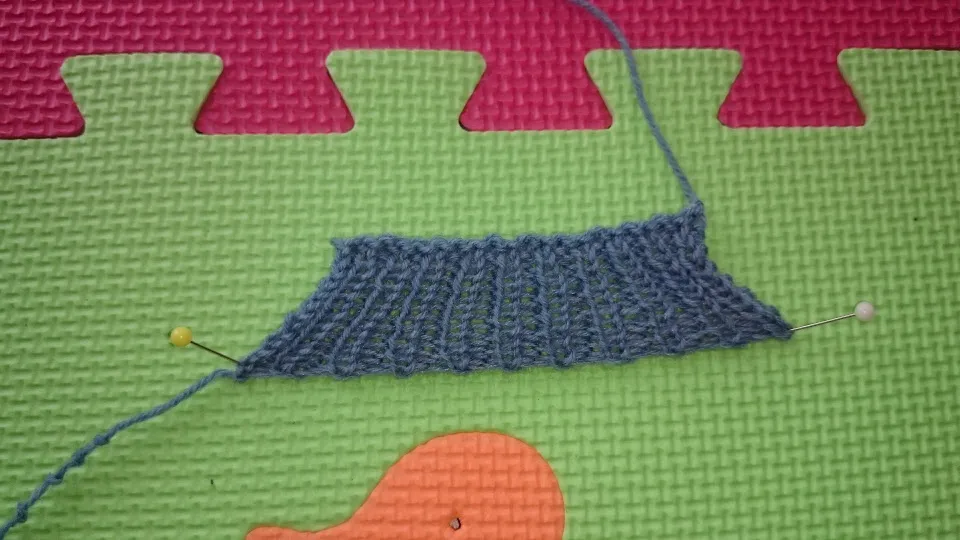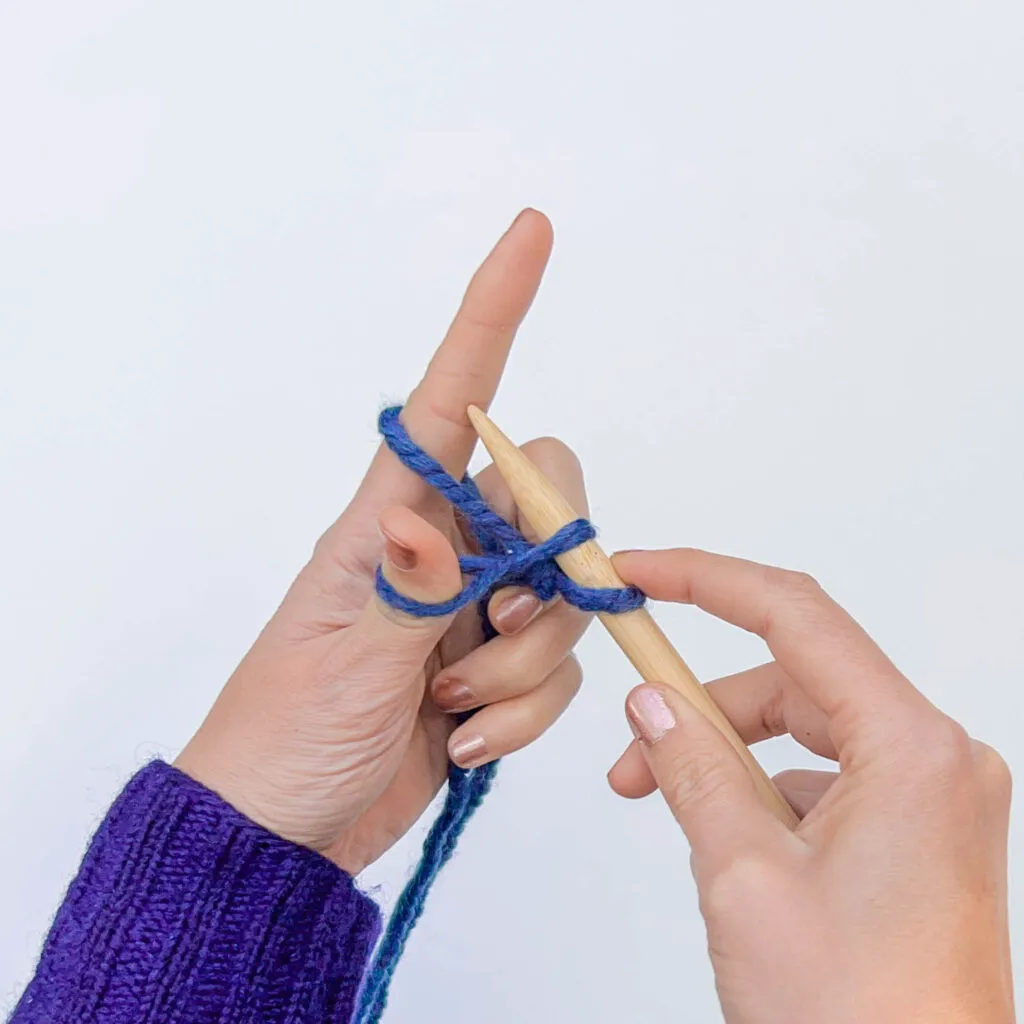Elastic Cast On Knitting: A Beginner's Guide to the Perfect Edge
Learn the Elastic Cast On: A Simple and Stretchy Way to Start Your Knitting Projects
Learn the Elastic Cast On: A Simple and Stretchy Way to Start Your Knitting Projects
7 – Stretchy Tubular Cast On (using Judy’s Magic Cast On)
Close up of the relaxed tubular cast on using Judy’s Magic Cast On
This is likely the easiest tubular cast on I’ve ever done. I’ve had experience with the Italian Tubular Cast On before but just found it too fiddly. Especially, since I mostly use circulars and it’s very hard to keep the cast on stitches placed right on the cable of a circular. (The resulting edge looks really nice, though.)
I’ve used Judy’s Magic Cast On on multiple occasions – as many sock knitters who (also) knit toe up probably have. That is likely the trickiest part of it but again not as difficult as it seems and a really good specialized cast on to know! Now Karen Mutchii, who posted that tutorial I’ve linked above, is actually doing Judy’s Magic Cast On “wrong”. It still works but it’s not how it’s usually described, so keep that in mind. This method of tubular cast on still works with the original way of doing Judy’s Magic Cast On, so use the method you prefer.
The edge it creates is decorative and not invisible as the Italian Cast On. It looks very nice. However, I find that it doesn’t stretch as much as the other method’s I’ve tried.
Stretched tubular cast on using Judy’s Magic Cast On
Which of these stretchy cast ons have you tried before? Which will you try in the future? Do you know of any more that I haven’t covered here? Please let me know in the comments below.
If you want to learn more about cast ons and bind offs check out my other posts on that subject. Also, there are two books I can recommend:
- Cast On Bind Off(*)by Leslie Ann Bestor
- Cast On, Bind Off: 211 Ways to Begin and End Your Knitting(*) by Cap Sease
On top of that Craftsy has a class on the subject of cast ons and bind offs that is worth watching: 40 Ways to Cast On & Bind Off with Aurora Sisneros (*). And besides searching on Youtube and Google you can always check out Very Pink Knits. They have a large library of knitting technique videos.
So that’s it with the stretchy cast ons for today. I may do another post about tubular cast ons if you like. There seem to be enough of them out there to make an interesting post. And since so far I’ve only tried two, I get to learn more about this, too.
Perfect Applications
This cast-on method truly excels in baby wear and children’s garments. When designing sweaters for little ones, consider that:
- The neckline must be generous enough to slip over a baby’s head comfortably
- Different size garments may need proportionally adjusted neck openings
- A too-tight neck opening can result in an unworn garment
- The edge should maintain its shape and elasticity through multiple wearings and washings
Knitting Cast On Methods: Stretchy, Stretchier, and Stretchiest!
We love this cast on method for its ease of completion, since if you know how to knit a stitch, you can easily complete this cast on method. However, with its ease comes an exchange: it's only slightly stretchy, and so it works best for more loose-fitting garments that don't require a whole lot of stretch to slip on and off.
This cast on method is near and dear to many, as it's often the first cast on method we all learn, even if it's a little bit difficult to master from the start and can generate a lot of confusion from beginners. That said, it's so popular for a reason: it's stretchy enough to really be used for any garment, but doesn't deliver so much stretch that your cast on edge will flare. If ever you find yourself unsure of which cast on method to use for a stretchy edge, the long-tail cast on should be your go-to.
Don't get this confused with the wrap cast on method! There are a couple of extra steps to this method to help give it more stretch than its simpler counterpart. This cast on method is ideal for people who prefer the versatility of the long-tail cast on, but find themselves having a hard time learning it or getting the working yarn and tail confused. It's also great for older folks with perhaps degrading motor skills, as it's much less fast-paced and involves more direct manipulation of the yarn with your hands, rather than maneuvering the needle through the yarn. It's about as stretchy as the long-tail cast on, so as a general rule, any pattern that uses that method can use this one in its place.
If you thought the long-tail cast on method was confusing, you won't enjoy the old norwegian cast on. However, if you've mastered the long-tail cast on method and you're ready for something new, just a little bit of practice is all it takes to figure this method out. It's worth it, too; the old Norwegian cast on offers more stretch than the long-tail cast on method, due to a greater amount of twisting while working it up, while still offering a very clean edge. This is the best cast on for sweater bottoms and tight ribbing out of this list, so use it if you know you're going to need a lot of extra stretch.
7 Beautiful & Stretchy Cast Ons You Need to Know
I think we’ve all been there. You’ve knit a beautiful pair of socks, a hat or sweater only to find out that the cast on ended up too tight. Even though you had swatched and everything seemed to match the needed gauge.
Some projects need a cast on with more stretch to it than your usual cast on might offer. Some yarns have less give which in turn means your cast on will have less give. With some needles, you just knit tighter than with others.
So here is a list of stretchy cast ons you can use to avoid those problems. Some of these I’ve found in the book “Cast On, Bind Off” and some just found on the internet by googling. I’ve tried them all out on small swatches so I can show them to you. I’ve knit all of the swatches with the same fingering weight yarn and over 21 or 22 stitches of either K1, P1 or K2, P2 ribbing in order to be comparable.



Tegs:
Search
Recent Posts
-
Knitted vs Braided Elastic: Understanding the Differences and Choosing the Best for Your Needs
May 13 2025
-
Learn about the different types of elastic available for sewing and choose the perfect one for your project.
Jun 15 2025
-
Discover the Strength of Cast Iron: Storm Sewer Grates Explained
Apr 17 2025
-
Master the Art of Knitting: A Beginner's Guide to Casting Off
Apr 26 2025
Subscribe to Updates
Get the latest posts and fashion insights directly in your inbox.